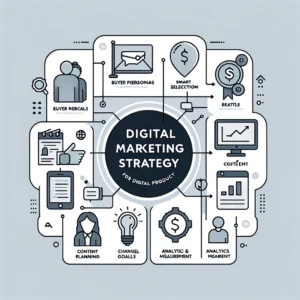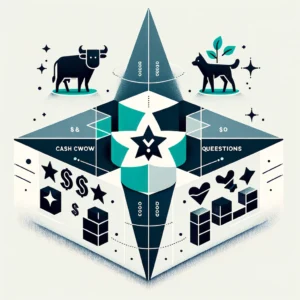1. What is CRO?
Conversion Rate Optimization (CRO) involves a series of techniques aimed at increasing the percentage of visitors to a website who perform a desired action. This action could be anything from subscribing to a newsletter, registering for a webinar, to purchasing a product. The primary goal of CRO is to make the most out of existing traffic by enhancing the user experience and persuading users to take action.

The process of CRO is methodical and data-driven, relying heavily on insights from web analytics, user feedback, and market trends. It encompasses various elements of a website, such as content, design, layout, and user journey. By understanding what resonates with the audience, businesses can make informed changes that boost conversions.
Are you looking for an exprert in CRO? Let’s Talk!
2. Components of a Conversion Rate
A conversion rate is more than just a statistic; it’s a reflection of how effectively a website can persuade visitors to take action. Several components influence this rate:
- Website Design: The overall aesthetic, ease of navigation, and user experience play a significant role in persuading visitors to convert.
- Content Relevance: The content must resonate with the target audience and clearly convey the value proposition.
- Call-to-Action (CTA): Effective CTAs guide users towards taking the desired action, be it making a purchase, signing up, or downloading a resource.
- Loading Speed: A fast-loading website is crucial for maintaining user interest and reducing bounce rates.
- Mobile Optimization: With the increasing use of mobile devices, ensuring a website is mobile-friendly is essential for capturing this segment of the market.
3. Industry-Specific Conversion Rate Optimization
Different industries will have varying benchmarks for what constitutes a ‘good’ conversion rate. For instance, e-commerce sites might have different expectations compared to B2B service providers. It’s important for businesses to understand their industry standards and strive to meet or exceed them.
Application of Conversion Rate Optimization in Products and Websites
1. Where Conversions Happen
Conversions can occur at multiple touchpoints on a website. Each page, whether it’s the homepage, a blog post, or a product description page, presents an opportunity for conversion. Understanding the role of each page in the customer journey is key to optimizing them effectively.
2. Calculating Conversion Rates Across Different Scenarios
The method of calculating conversion rates can vary depending on the type of conversion. For instance, an e-commerce site might calculate conversion rates based on completed purchases, while a B2B website might consider a successful conversion to be a completed contact form
In-Depth Strategies for Conversion Rate Optimization Specialists
1. Advanced Techniques in CRO To truly excel in CRO, specialists need to be adept at several advanced techniques:
- Segmentation and Personalization: Tailoring the user experience to different segments of the audience can significantly boost conversion rates.
- Heatmap Analysis: Using tools to understand where users are clicking and how they navigate a website can provide invaluable insights.
- Customer Journey Mapping: Understanding the path a customer takes from first contact to conversion helps in identifying and fixing leaks in the conversion funnel.
2. The Role of A/B Testing in CRO
A/B testing is a cornerstone of CRO. It involves comparing two versions of a webpage to see which performs better. This method allows for data-driven decisions and helps avoid the pitfalls of making changes based on assumptions.
Advanced Insights into Conversion Rate Optimization
1. Case Studies in CRO Examining real-world examples provides practical insights into effective CRO strategies. For instance, a case study on an e-commerce website could demonstrate how changing the layout of product pages resulted in a 15% increase in conversions. Another example might be a SaaS company that increased sign-ups by 25% through personalized landing pages. These case studies not only highlight successful tactics but also underscore the importance of continuous testing and adaptation.
2. CRO Across Different Industries CRO techniques vary widely across industries. In e-commerce, focus might be on optimizing product descriptions and checkout processes, while in the service industry, it could be about enhancing the clarity and appeal of service offerings. Understanding the unique challenges and opportunities in each industry is crucial for tailoring CRO strategies effectively.
3. User Psychology and Behavior Understanding user psychology is a fundamental aspect of CRO. This involves studying how users interact with a website and what motivates them to take action. Factors like trust signals, social proof, and emotional triggers can greatly influence conversion rates. By tapping into these psychological aspects, businesses can create more persuasive and user-friendly websites.
4. Technological Advancements in CRO Tools The field of CRO is continually evolving with advancements in technology. Tools like AI-driven analytics, predictive modeling, and automated A/B testing are revolutionizing how businesses approach conversion optimization. These tools offer more sophisticated data analysis and insights, enabling businesses to make more informed decisions.
Expert Opinions and Successful Campaign Analysis
1. Insights from CRO Experts
Interviews with CRO experts can provide valuable perspectives on current trends, challenges, and future directions in the field. These experts can share their experiences, tips, and best practices, offering a wealth of knowledge to those looking to enhance their CRO strategies.
2. Analysis of Successful CRO Campaigns
Analyzing successful CRO campaigns can offer a blueprint for what works in the real world. This could involve dissecting the strategies used by leading brands in their CRO efforts, identifying key factors that contributed to their success, and understanding how these strategies can be adapted to other contexts.
Conclusion
In conclusion, Conversion Rate Optimization is an essential component of digital marketing, encompassing a wide range of strategies, tools, and techniques. Its effectiveness lies in its ability to combine data-driven insights with a deep understanding of user behavior and market dynamics. As technology evolves and consumer behaviors shift, staying abreast of the latest trends and best practices in CRO will be critical for businesses seeking to maximize their online potential.



